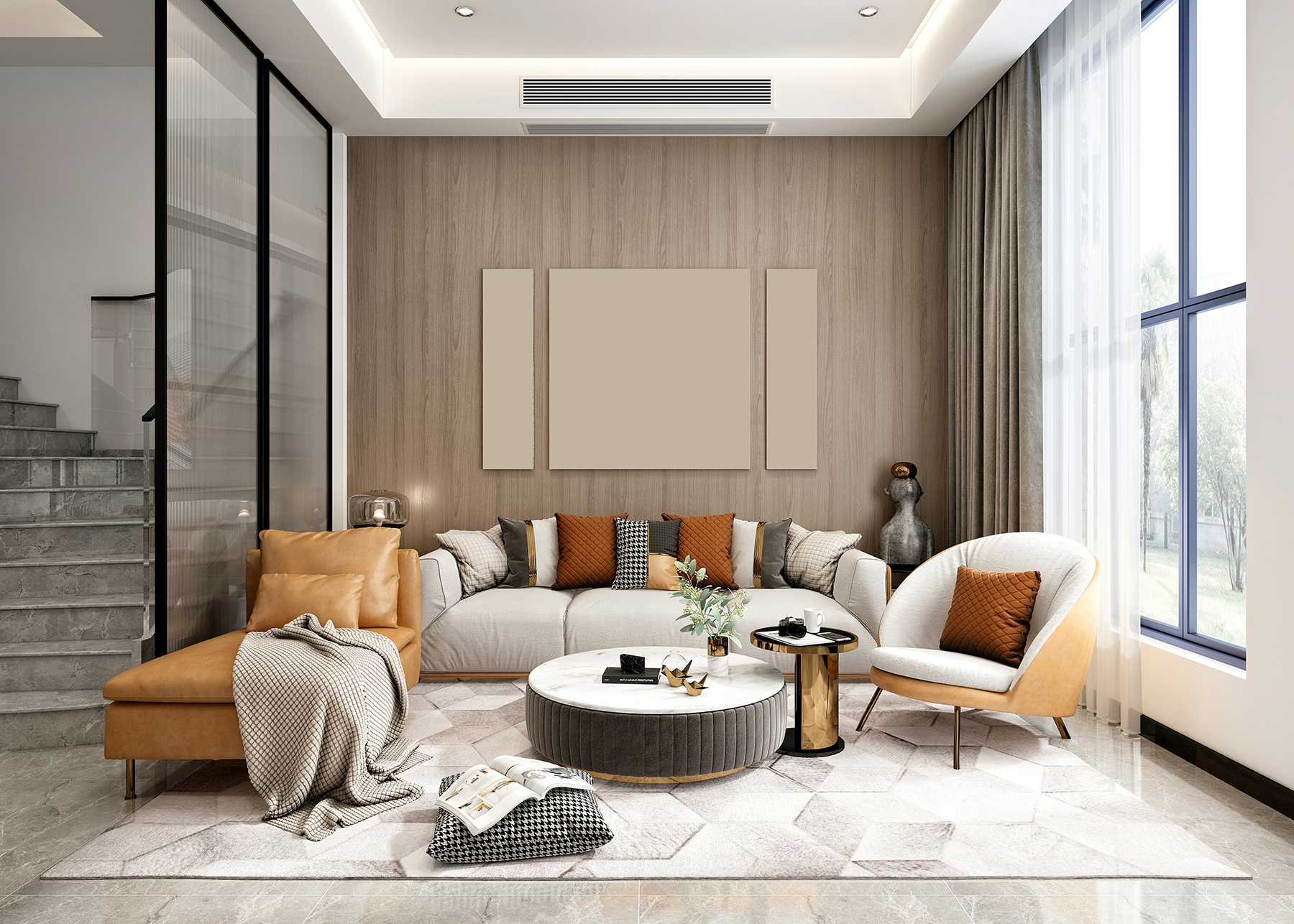Expert Tips for Fall & Winter Home Selling
As the days grow shorter during fall and winter, selling your home presents unique challenges. With fewer daylight hours and overcast skies, making your property stand out to potential buyers requires strategic planning and attention to detail. At The Gresham Group, we understand that proper staging can make or break a sale, especially when natural light is scarce and home tours often happen in dim conditions.
The numbers speak for themselves: 83% of buyers’ agents report that staging makes it easier for buyers to visualize a property as their future home, according to the National Association of Realtors’ 2025 Profile of Home Staging. Even more compelling, 19% of sellers’ agents noted an increase of 1% to 5% in dollar value offered by buyers when homes were staged compared to similar unstaged properties. Additionally, research shows that staged homes can sell up to 73% faster than their non-staged counterparts.
When daylight is limited, every aspect of your staging strategy becomes more critical. Here’s your comprehensive guide to preparing your home for sale during the darker months.
The Challenge of Limited Daylight
During fall and winter months, homes often face a perfect storm of showing obstacles. The sun sets earlier, clouds obscure natural light, and bare trees offer less visual warmth. Buyers touring homes during these seasons may see your property at its darkest, making rooms feel smaller, colder, and less inviting than they truly are.
This is particularly problematic because first impressions drive buying decisions. When buyers can’t clearly see your home’s features or envision themselves living there, they’re more likely to move on to the next listing. Your staging strategy must compensate for what nature isn’t providing.
The Foundation of Successful Staging
Before addressing lighting or furniture placement, you must declutter ruthlessly. This step is non-negotiable and has the highest impact on how buyers perceive your space. In darker conditions, clutter is even more noticeable and makes spaces feel cramped and poorly maintained.
Start by removing everything from countertops except for a few carefully chosen decorative items. Kitchen counters should be nearly bare, bathroom vanities should display only essential styling pieces, and living areas should showcase minimal accessories. The rule of thumb: if you question whether something should stay, it should go.
Pay special attention to closets and storage areas. Buyers will open every door, and organized, half-empty closets suggest abundant storage space. Remove at least half of your clothing and belongings from closets to make them appear spacious. During darker months when indoor spaces matter more, storage capacity becomes a key selling point.
Don’t forget about visible storage throughout your home. Bookshelves should be edited down to one-third of their capacity with books arranged by height and color. Clear off refrigerator doors completely. Remove excess furniture that blocks pathways or makes rooms feel crowded.

Depersonalizing Your Space
While your home is filled with cherished memories, buyers need to imagine creating their own memories there. Remove all family photos, children’s artwork, personal collections, and religious items. Take down diplomas, awards, and anything else that reminds viewers this is someone else’s home.
Replace personal items with neutral artwork and accessories that complement your home’s style without imposing personality. This neutral backdrop becomes especially important when natural light isn’t highlighting architectural features.
Focus particularly on the three rooms buyers care about most, the living room, followed by the primary bedroom and kitchen. These spaces should be completely depersonalized and staged to perfection.
Strategic Furniture Placement
How you arrange furniture dramatically impacts how spacious and functional your home appears, especially in limited light when shadows can make rooms feel smaller.
The most common mistake sellers make is pushing all furniture against walls. Instead, float furniture away from walls to create intimate conversation areas and clear traffic patterns. Position sofas and chairs in groupings that suggest how the space can be used, making it obvious how people would naturally move through and inhabit the room.
In living rooms, angle your furniture slightly rather than placing everything parallel to walls. This creates visual interest and makes the space feel intentionally designed rather than merely furnished. Ensure at least 30 inches of clearance for walkways between furniture pieces so the room feels navigable and spacious.
For dining rooms, center your table under the light fixture with adequate space for chairs to pull out comfortably. If your dining area is small, consider a smaller table with fewer chairs to prevent the space from feeling cramped. In darker months, buyers pay more attention to interior spaces, so proportion matters more than ever.
Bedrooms should feel serene and spacious. Center the bed on the most prominent wall, typically opposite the door or under a window. Use matching nightstands and lamps to create symmetry and a hotel-like quality. Remove bulky dressers if they make the room feel crowded—buyers want to see square footage, not furniture.
If you have a small home or rooms with awkward layouts, resist the urge to overfurnish to show functionality. Less is more. A small room with minimal, properly scaled furniture looks more spacious than the same room crammed with pieces that prove it “works.” Let the architecture speak for itself.
Maximizing Light in Every Room
Strategic lighting transforms how buyers experience your home during limited daylight hours. The goal is to create a warm, welcoming atmosphere that showcases your home’s best features regardless of what’s happening outside.
Use the three-layer lighting approach that professional stagers rely on. Ambient lighting provides overall illumination through ceiling fixtures and chandeliers. Task lighting serves functional areas like kitchen counters and reading nooks. Accent lighting creates focal points with table lamps, picture lights, and uplighting.
For optimal results, aim to have at least three sources of light operating in each main room. This creates depth, eliminates shadows, and photographs beautifully for online listings. Turn on every single light in your home before showings, including lamps, overhead fixtures, and even closet lights.
Replace all burned-out bulbs and upgrade to warm LED bulbs in the 2700K-3000K range. Ensure all bulbs in the same room match in color temperature—inconsistent lighting feels disjointed and unprofessional. Clean every light fixture, chandelier, and lampshade to maximize light output.
If you have dated light fixtures, replace them. Modern fixtures are affordable and can dramatically update a room’s appearance. This is especially important in key areas like the dining room chandelier, bathroom vanities, and kitchen pendant lights.
Maximize natural light by cleaning windows inside and out, removing heavy curtains in favor of light-filtering sheers, and trimming any overgrown landscaping that blocks windows. Position mirrors opposite windows or near light sources to reflect and amplify available light. Large mirrors can make rooms feel more spacious and significantly brighter.
Creating the Right Atmosphere
Staging isn’t just about what buyers see—it’s about how your home makes them feel. During darker months when outdoor appeal is diminished, the interior atmosphere becomes your primary selling tool.
Temperature matters significantly. Keep your home at a comfortable 68-70 degrees during showings. A cold home feels unwelcoming and suggests heating problems, while an overheated space can be uncomfortable. In darker months, buyers spend more time indoors during showings, making temperature control critical.
Add subtle, welcoming scents through fresh flowers, simmering vanilla on the stove before showings, or high-quality reed diffusers in neutral scents like clean linen or light citrus. Avoid candles, air fresheners, or anything artificial—many buyers are sensitive to strong scents.
Bring life into your home with fresh flowers or high-quality faux arrangements in key areas like the entryway, kitchen island, and primary bathroom. Green plants add vitality and suggest the home is cared for. During winter months when outdoor landscaping is dormant, these touches of nature become even more important.
If you have a fireplace, ensure it’s clean and consider having it lit during showings. The combination of warm light, crackling sounds, and implied coziness creates emotional appeal that’s particularly powerful during colder months.
Outdoor Lighting and Curb Appeal
During limited daylight hours, your home’s exterior can either welcome buyers or send them driving past. Curb appeal becomes exponentially more important when most showings happen during darker hours, and strategic outdoor lighting is your most powerful tool.
Start with your entryway. The front door area should be well-lit with a statement fixture that complements your home’s style. If your current porch light is dated or dim, replace it with a modern fixture that provides adequate illumination. Consider adding wall sconces on either side of the door for a sophisticated, layered look that ensures buyers can clearly see the entrance.
Path lighting guides visitors from the driveway or sidewalk to your front door, creating a welcoming journey. Solar-powered stakes are an affordable option, but hardwired low-voltage LED path lights provide more consistent, professional-looking illumination. Space lights every 6-8 feet along walkways for optimal coverage without over-lighting.
Landscape lighting showcases your home’s architecture and mature trees even after dark. Use uplights at the base of attractive trees or architectural features to create dramatic shadows and visual interest. Downlights mounted in eaves can wash exterior walls with light, making your home appear larger and more inviting. Focus on highlighting your home’s best features rather than lighting everything uniformly.
Address your driveway and garage area as well. Motion-sensor lights near the garage provide security and visibility, while a well-lit driveway suggests the property is safe and well-maintained. If you have a detached garage or outbuildings, ensure they’re adequately lit to showcase the full extent of your property.
Don’t overlook daytime curb appeal either. Even though daylight is limited, buyers will still see your home during afternoon showings. Keep your lawn maintained (or cleared of leaves and debris in fall/winter), trim hedges and bushes, and add seasonal touches like planters with cold-weather plants near the entrance. Sweep walkways, power wash exterior surfaces if needed, and ensure house numbers are clearly visible and attractive.
Your mailbox, despite being a small detail, impacts overall curb appeal. If it’s rusted, leaning, or outdated, replace it with a new one that complements your home’s style. Fresh mulch in beds, a new welcome mat, and a decorative wreath on the front door all contribute to that critical first impression.
Consider the view from the street during evening hours. Stand across the street at dusk and evaluate what buyers see. Are windows glowing warmly with interior light? Does the pathway feel inviting? Is the house number visible? This perspective reveals what buyers will experience during those shorter days when showings often extend into evening hours.
The Investment That Pays Off
Staging your home properly doesn’t require massive investment, but it does demand attention to detail and willingness to see your home through buyers’ eyes. The median dollar value spent on staging services was $1,500, with much of this investment going toward creating the right ambiance through lighting, furniture arrangement, and strategic styling.
Additionally, faster sale times mean less time paying two mortgages, maintaining a show-ready home, and experiencing the stress of an extended selling process.
Your Next Steps with The Gresham Group
As the days grow shorter, don’t let limited daylight dim your home’s potential. The right staging strategy—combining decluttering, depersonalization, strategic furniture placement, and proper lighting—can transform your property into a must-see listing that captivates buyers and commands top dollar.
At The Gresham Group, we specialize in helping sellers present their homes in the best possible light, literally and figuratively. Our team understands the unique challenges of selling during fall and winter months and can provide personalized recommendations for your property.
Ready to maximize your home’s appeal? Contact The Gresham Group today for a complimentary staging consultation. We’ll walk through your home, identify opportunities for improvement, and create a customized plan to ensure your property stands out in any season.





